 Your new post is loading...
 Your new post is loading...
Fresco is a lot like Uber. But unlike similar apps where you request a car, takeout, or a even a dog walker, Fresco puts a call out for a photojournalist. A newsroom posts a request for video of, say, a crime scene, and a Fresco user in the area can accept, take a video of it, and upload it to Fresco. If the news outlet uses it, the Fresco user gets paid $50.
TV news stations across the country are using the app, but Fresco is particularly appealing to KTBY, a station in Anchorage, Alaska. Alaska is a big state, and many of KTBY’s viewers live in remote villages that are hours away by plane. It’s hard to cover those communities without spending a ton of money and time. In a Fresco promotional video, Scott Centers, COO of Coastal Television Broadcasting Company, which owns KTBY, marvels that Fresco offers an affordable alternative.
Opinary has its own newsroom that creates editorial polls, which can then be integrated into a news site in place of comments. Behind the scenes, a data science team tracks the opinions of more than 25 million monthly users and reflects their results to publishers and readers. Currently, Opinary has partnerships in Europe with The Times, The Independent, Huffington Post and others. In January, Simon Galperin joined Opinary as their U.S. head of growth. His goal: to identify how to maximize social impact in coordination with publishers and journalism networks like the Institute for Nonprofit News, Solutions Journalism and Reveal. We talked with Galperin about how to measure engagement, reinvented....
When the organizer of the #NotMyPresident protests refused to appear on Tucker Carlson’s show, the Fox News host booked an actor with no ties to its leadership as a replacement. Fox News’ Tucker Carlson had a hard time booking Olga Lexell, the creator and co-organizer of the nationwide Not My President’s Day protests on Monday. So, after repeated refusals, Carlson’s show instead booked Shane Saunders, a Los Angeles-based actor and casting agent, who Lexell said “was not affiliated in any way with our rallies and was not an organizer.” In the five-minute segment, Saunders was referred to as an “organizer” by an on-screen graphic and Carlson himself, who also asked Saunders about why “your protest is going to make a difference.” “It's frustrating because, with the exception of one person, all of the organizers are women,” Lexell told The Daily Beast. “For a man who knows nothing about the protests to go on TV unprepared, misrepresent our message, take credit for our weeks of hard work, and make us look bad—and for Tucker Carlson's team to go along with it—is just disappointing.”...
Since winning the presidential election, Donald Trump has reportedly skipped out on the majority of his intelligence briefings; this past Sunday, Trump made headlines after sharing false information blaming his loss of the popular vote on mass voter fraud — a claim previously reported by the conspiracy news site Infowars. It’s been widely reported that Trump is an obsessive consumer of cable news — he has himself admitted to receiving at least a portion of his military advice from “the shows.” But, pundits and chyrons aside, relatively little is known about where the next president will find the news and commentary that might color his time in office. What exactly is Trump’s media diet?
What we know of Trump’s relationship to the modern internet suggests the president-elect rarely browses it himself. Trump campaign press secretary Hope Hicks told GQ he relies largely on Google News printouts from staffers and sparingly reads his own email. And a 2007 deposition suggests that Trump doesn’t use a computer or carry a smartphone during the daytime hours, and often dictates daytime tweets to his assistants.
To better understand Trump’s media consumption, BuzzFeed News turned to the president-elect’s largest source of public proclamations and shared news: Twitter. While Trump’s media consumption and methods appear opaque and unconventional, the stories he chooses to share with his now 16 million–plus followers offer a unique window into the news and commentary that catch his eye...
Our analysis revealed a media ecosystem that appears to largely reinforce and affirm the views publicly expressed by Trump and his closest advisers. The news stories Trump tweets share several characteristics: 1) They often favor sensationalism over facts and reporting; 2) They frequently echo direct quotes from Trump himself or his closest advisers; and 3) They routinely malign his enemies and vindicate his most controversial opinions.... The stories shared by Trump’s account throughout his campaign suggest the president-elect has constructed a powerful online filter bubble that largely flatters and confirms that which he claims to be true....
If you thought you heard the last on fake news, you were sadly mistaken.
A Stanford study found that the majority of middle school students can’t tell the difference between real news and fake news. In fact, 82 percent couldn’t distinguish between a real news story on a website and a “sponsored content” post.
Of the 8,704 students studied (ranging in age from middle school to college level), four in ten high-school students believed that the region near Japan’s Fukushima nuclear plant was toxic after seeing an unsourced photo of deformed daisies coupled with a headline about the Japanese area. The photo, keep in mind, had no source or location attribution. Meanwhile, two out of every three middle-schoolers were fooled by an article on financial preparedness penned by a bank executive.
It seems that those surveyed in the study were judging validity of news on Twitter based on the amount of detail in the tweet and whether or not a large photo was attached, rather than focusing on the source of the tweet.
The WSJ, which first reported on the study, says that a big part of solving this problem among young people comes down to education, both at school and at home....
Some 23 per cent of news articles contain a social media embed, and 10 per cent of these embeds have either been modified or removed by their author since the article's publication, shows a report released today by SAM.
Social media curation platform SAM analysed one million web pages using its Report Card tool, focusing on North American news sites such as New York Daily News, Fox News, Vox, CNN or Forbes, to find out more about the role social media plays in newsgathering today.
The Report Card is available for free and enables publishers to find out how many social media embeds are currently on their websites and whether they have broken or they have been edited since publication....
According to a Nielsen Catalina Solutions (NCS) study, magazines deliver the highest return on advertising spend (ROAS), with an average return of $3.94 for every dollar spent on advertising.
The study, which was presented today at the Advertising Research Foundation Audience Measurement 2016 conference, revealed the next closest media platform is display advertising with a ROAS of $2.63.
“Over the past year, there has been a preponderance of evidence to prove the effectiveness of print advertising and the power of magazine media to both tell and sell,” stated Linda Thomas Brooks, president and chief executive officers of MPA – The Association of Magazine Media....
Gimlet isn’t alone here; there other prominent examples of media companies with an emphasis on long-form that are attracting millennials – VICE and Netflix docu-series come to mind. (It should be noted, even BuzzFeed, the king of snackable content, has invested in and attained recent success with long form.) So why is this? What are these companies doing that allow them to build large millennial audiences against the conventional wisdom that shorter is better? For your consideration, here are three reasons why long-form is actually the ideal format to reach millennials....
A relatively small group of publishers dominate Americans’ online news consumption, according to a new study by research outfit SimilarWeb, which compiled figures for the top news publishers covering both mobile and desktop audiences in 2015.
Overall, the top 10 publishers -- together owning around 60 news sites -- account for 47% of total online traffic to news content last year, with the next-biggest 140 publishers accounting for most of the other half, SimilarWeb found.The biggest online news publisher for the U.S. audience was MSN, owner of MSN.com, with just over 27 billion combined page views across mobile and desktop, followed by Disney Media Networks, owner of ESPN and ABC News, with 25.9 billion....
Ozy, Refinery29, Business Insider, Vox, and Buzzfeed are among the news and media startups valued over $100M.
Venture capital and strategic investors ranging from Comcast to Time Warner to Bertelsmann poured nearly $800M into digital news and media startups last year. The huge fundings are leading to some very robust valuations in the content business.
Notably, Buzzfeed and Vox Media each took investments of $200M from NBC Universal earlier this year, placing them in the now 139-member strong unicorn club. Now, Axel Springer has acquired Business Insider, valuing the company at $442M just 7 years after launch....
Instead, it’s perhaps a warning to anyone taking VC. You’d better expect if you’re taking all that money, you have a plan so the VCs get a pay-off. Are you going to generate those millions invested and more so? Or do you really think someone’s going to buy you for absurd multiples based on potential value? If so, maybe the VC money makes sense. But just because some publications go that route, not all need to.
Let me conclude by saying again how sad I am to see GigaOm end so suddenly. I hope the journalists there quickly find new places to write, as I’m sure they will. I also debated writing anything about this at all, when the loss of GigaOm remains so personal to so many and is still being digested. But seeing others writing about what it all means in the grand scheme of publishing, I thought another perspective might be useful.
Amid widening concerns that another startup bubble has formed, digital media remains a white-hot market among the private-investment community.
Last year, venture capital poured at least $683 million into digital media companies worldwide -- more than twice the $277 million invested in 2013, according to Preqin, which tracks venture-capital investments.
That investment comes as traditional media companies like The New York Times and Condé Nast cut staff, trim costs and turn over every possible rock in search of new revenue streams. Meanwhile, digital media companies -- which have a fraction of old media's revenue and even less of their profits -- are awash in investor cash....
The most interesting news consumption research uses ethnography: this involves watching people and measuring what they actually do – not what they say they do. To this end AP’s 2008 report A New Model for News is still one of the most insightful pieces of research into news consumption you’ll ever read – because it picks out details like the role that email and desktop widgets play, or the reasons why people check the news in the first place (they’re bored at work, for example).
Now six years on two Dutch researchers have published a paper summarising various pieces of ethnographic and interview-based consumption research (£) over the last decade – providing some genuine insights into just how varied news ‘consumption’ actually is....
|
“In a world where we had control of such things,” Tom Jolly, the associate masthead editor at The New York Times, told me in an email, “we’d break the big stories early in the day, when more people are online.” This dynamic is, in a strange way, a throwback. As Matt Pearce, a national correspondent for The Los Angeles Times pointed out in a string of tweets Wednesday night, “it's like we’ve bizarrely returned to the era of the evening edition.” The news alert that The New York Times distributed to readers’ cellphones Wednesday night. About one hour after Times readers received a news alert Wednesday night, The Washington Post notified readers of its latest scoop. In the late 19th and 20th centuries, the evening edition was the newspaper you grabbed for your commute home from work. Because it was published in the afternoon, it was the best way to get the most up-to-date news in print. After all, by the time the work day ended, that day’s morning paper covered events that had taken place at least a full day before....
The 2016 election and new administration come accompanied by a renaissance of political image-making: The release of new cover art by magazines like Der Spiegel and Time are met with thousands of shares and retweets. Each photograph and illustration is analyzed and picked apart by commentators. And fomenting all of this is a protest movement with a flair for signage that remixes, reappropriates, and borrows the work of these artists.
Not since George Lois's iconic work for Esquire in the '60s has cover art enjoyed so much popular and critical success. It’s a fascinating time to be an illustrator, designer, or painter working on political subjects. Co.Design asked some of the voices and pens behind today’s iconic cover art about their work—and what’s changed in the past three months....
Wired magazine recently published, Keeping Up with the Times, a story about the New York Times and its slow & painful transition to a digital first publication. “It’s to transform the Times’ digital subscriptions into the main engine of a billion-dollar business, one that could pay to put reporters on the ground in 174 countries even if (OK, when) the printing presses stop forever,” Gabriel Snyder (one of my favorite writers, by the way) wrote in his in-depth feature, which is worth reading.
After reading the piece, I thought let’s see how the Times is really doing — by the numbers. With help of Nima Wedlake, I came up with data to chart the progress made by the company, to see how far it really is from its transformation into a billion-dollars-in-digital-business. Have a look:
The company reported revenue of nearly $1.6 billion in 2016 — remarkably consistent with prior years. But under the surface, the mix of revenue is changing dramatically as revenues from its print advertising business continue to decline....
The 2016 election exposed a significant crisis for U.S. democracy: the failure of our news media system.
This was an election in which false news was consumed as if true; in which polls were significantly off-base; in which journalists missed the stories both of Trump supporters, who came out in unanticipated numbers, and former Obama voters, who defied predictions to stay home.
The easy response, in the wake of these multiple failures, is to focus on one specific weakness. If only journalists had interviewed more white people in the Rust Belt! If only pollsters had looked at a different data-set! If only Facebook were not so dominant, or fake news sites so plentiful…
Such essays in search of simple answers represent no more than collective wishful thinking. Systemic failures have systemic causes. Repairs to the system may not be enough. We need to put time and resources now into transforming our news media system.
Why did we not know that voters in the Rust Belt were willing to vote for an anti-regulation racist populist, even when doing so might go against their values and self-interests? Likewise, why did news organizations fail to anticipate what appears to be a lower turnout of black voters in North Carolina (with its new voter suppression laws)?
It’s not that journalists in those communities were not doing their job; it’s that there are very few journalists left to tell the stories of those communities....
It’s been a remarkable year for the nation, and its press. Transfixed by the Trump phenomenon, election anxiety has all but consumed us. But soon, what has felt like a national colonoscopy will soon be over, and the press will march (or at least step) forward. As we consider the most newsworthy U.S. press happenings of this year, let’s start projecting forward to 2017. Tronc may well disappear early into it, but in a sons-also-rise scenario, the Murdochs and the Sulzbergers maintain center stage, and the future of Gannett and GateHouse — two companies that collectively own almost one in five U.S. dailies — becomes even more important. Let’s take 10 storylines of 2016 and extend them into the year ahead....
The cover of Time’s Oct. 24th issue, hitting newsstands soon, features an image trumping its Aug. 22nd cover, literally. Both feature versions of similar illustrations by artist Edel Rodriguez -- the first featuring a single-word cover line,“Meltdown; the second featuring two words: “Total Meltdown.” The covers are striking for another reason. Time magazine usually reserves black background covers for extremely important stories.
A majority of U.S. adults – 62% – get news on social media, and 18% do so often, according to a new survey by Pew Research Center, conducted in association with the John S. and James L. Knight Foundation. In 2012, based on a slightly different question, 49% of U.S. adults reported seeing news on social media.1
But which social media sites have the largest portion of users getting news there? How many get news on multiple social media sites? And to what degree are these news consumers seeking online news out versus happening upon it while doing other things?
As part of an ongoing examination of social media and news, Pew Research Center analyzed the scope and characteristics of social media news consumers across nine social networking sites. This study is based on a survey conducted Jan. 12-Feb. 8, 2016, with 4,654 members of Pew Research Center’s American Trends Panel.
News plays a varying role across the social networking sites studied.2 Two-thirds of Facebook users (66%) get news on the site, nearly six-in-ten Twitter users (59%) get news on Twitter, and seven-in-ten Reddit users get news on that platform. On Tumblr, the figure sits at 31%, while for the other five social networking sites it is true of only about one-fifth or less of their user bases....
Local daily newspaper reporter?
How soon will we have to add this once-stable occupation to the list of jobs that once were — occupations once numerous that slid into obsolescence? (Not to mention the even more colorful spittleman [hospital attendant], rotarius [wheelwright], and hamberghmaker [horse collar maker].)
In this morning’s released annual census, the American Society of News Editors found its first double-digit decline in newsroom count since the Great Recession of seven years ago. Newsroom jobs dropped 10.4 percent — down to 32,900 full-time journalists at nearly 1,400 U.S. dailies, 2014 over 2013. That’s the loss of 3,800 jobs in just one year. (Detailed table at bottom of this column.)...
It's called the Express Team. The New York Times has created a new newsroom unit to tackle the types of stories that are going viral on the web.Headed up by Patrick LaForge, the "Express Team" "will cover news that readers are searching for and talking about online, but also push that news forward rather than just repackaging it for clicks," according to a Tuesday afternoon staff memo signed by executive editor Dean Baquet, deputy executive editor Susan Chira, editor for innovation and strategy Kinsey Wilson, and assistant editor Clifford Levy.
"This new team will quickly and smartly weigh in on the issues and questions that are attracting attention across the day and around the world," they wrote.
The move comes as the Times' is becoming ever more aggressive about scaling its digital audience, which is becoming more important to revenue growth....
For traditional media companies looking for an alternative, Blendle may have an answer. The website essentially acts as “Spotify for journalism.“ It’s a reinvention of the newsstand, built for the Internet, where readers pay by the article instead of per issue or through a monthly subscription.
This all occurs seamlessly in a way that prioritizes the user: your credit card information is stored on the site for easy payment, and an unorthodox refund option allows users to get their money back if they’re not satisfied with the piece.
Traditional publishers seem to be excited by Blendle’s potential to provide a desperately needed new revenue stream. The New York Times (a Blendle investor), the Wall Street Journal and the Washington Post have already signed up, and more American publishers are likely on the way...
There are already strategic choices facing the organization, specifically the fate of the World Service, though the report from parliament may signal its future is relatively safe. Either the World Service will need to grow more, or it will need to be cut back to basic, and cheaper, levels and focus resources on other key parts of the BBC charter.
The report is more firm on quality over quantity, putting it at odds with a bulk of news websites currently bombarding Facebook and Twitter with hundreds of links to hoover up any potential clicks for advertisers. Because the BBC within the UK does not allow advertising on any of the channels or websites, the need for clicks is merely to prove they are serving the public. That allows a different emphasis for news.
This is not a report for the public, though it is publicly available. Even as a reporter, I still haven’t worked out what some of the buzzwords mean in terms of day-to-day news journalism. Just as the Leveson Report in 2012 was at least a decade too late and barely touched on the Internet, the Future of News report feels late. Being that it is only the first part, it may be that the second part will offer more specific and comprehensive forward-looking proposals....
BuzzFeed is easy to bash; a fast-rising rocket ship is a visible target. And they do produce some pretty silly content. But when you discuss the future of journalism, BuzzFeed always seems to show up at that intersection between crazy and smart where genius so often lies.
What’s actually crazy is seeing most everyone try to copy BuzzFeed’s voice and play catchup to its trendy listicle format at one point or another—from old media, including the Times, to new media like Digiday, to opportunistic startups like Playbuzz.
When I say that publishers need to “stop chasing BuzzFeed,” what I mean is that they need to stop imitating BuzzFeed’s style and pay more attention to the brilliant way it runs its business.
What follows is an effusive—but important—list of nine ideas that BuzzFeed employs that the rest of us should rip off....
|
 Your new post is loading...
Your new post is loading...
 Your new post is loading...
Your new post is loading...





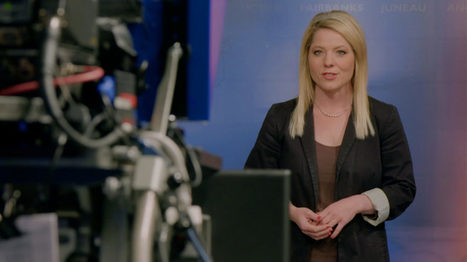

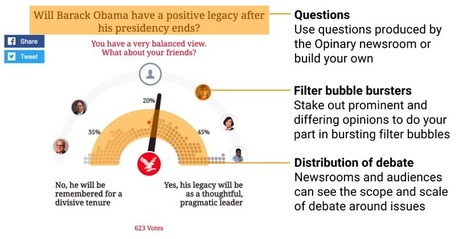

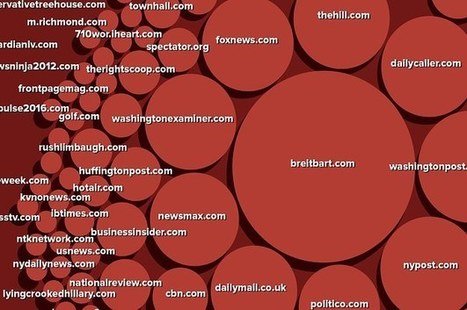





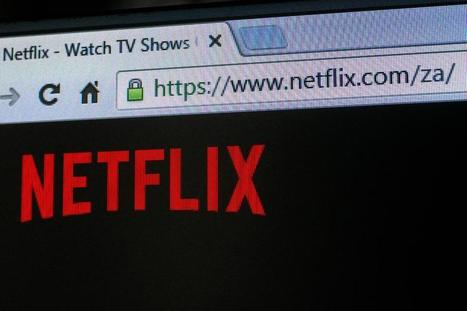
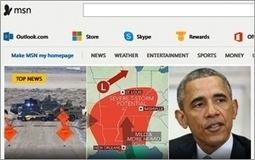


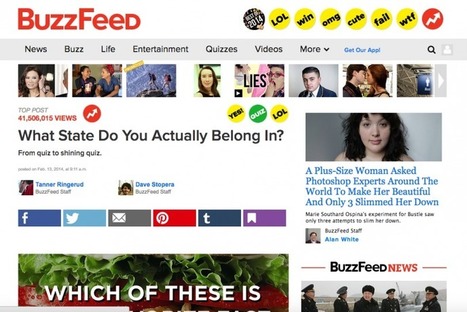


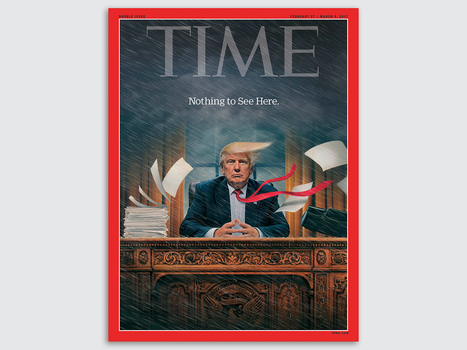






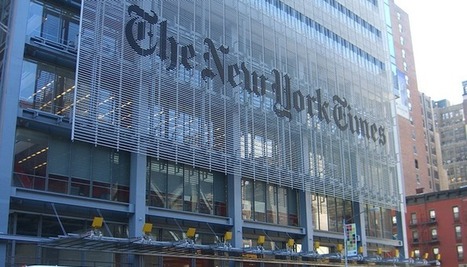








Cue and pay the citizen journalists.